
I recently had the good fortune to visit the Mojave desert just after the area received a few days of much-needed springtime rain. The rain was followed by warm, springtime temperatures and sun, and you know what that means… FLOWERS! California has been suffering a drought, but I was still pleasantly surprised by the quantity and variety of flowers that I was able to enjoy. Some were spotted out on hikes and many others were seen just off of the side of the road and in vacant lots.
Note: Scale is often difficult to gauge with photos. Please note that all of these plants, with the exception of the Joshua tree and hairy milkweed, were exceptionally small. The flowers were often no larger than the tip of my pinky finger or thumb and the plants grew very low to the ground.
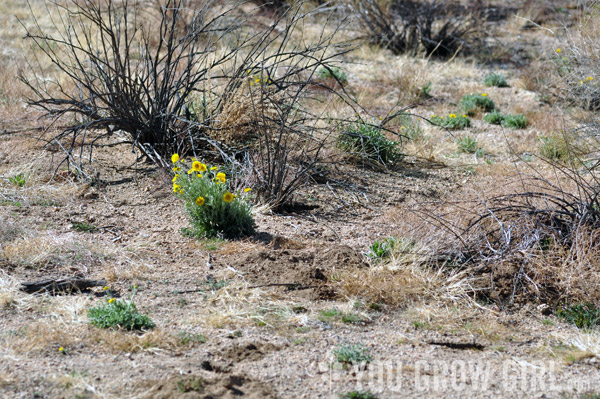
Obviously, being from the Northeast, desert flowers are not my area of expertise, so I have used four resources to aid in identifying the plants that are shown here. The first is a 12-page pamphlet called Pollen on Your Nose: Wildflowers of Joshua Tree National Monument published by the Joshua Tree Natural History Association in 1975. I bought it for pennies at a Joshua Tree thrift store! The second is Introduction to California Desert Flowers (Revised Edition) by Philip A. Munz published in 2004. By-the-way, I highly recommend this book as a resource guide for beginners to the flora of the region. It has great photos and is organized by flower colour, making it easy to find what you are looking for. The book includes descriptions of the kinds of conditions and landscapes where the plants can be found. However, I wish it also included more about the types of plant communities that each wildflower grows in as I find that information extra helpful in making accurate identifications. The third is Joshua Tree National Park’s Wildflower Report. This was only used for photos that I took inside the park. The last is Calflora, a nonprofit website that provides information on California’s wild plants.
I photographed so many wildflowers on this trip that I will have to break it down into two posts. This first post is focused on those that I spotted in and around Joshua Tree National Park. The next will include flowers seen in the Mojave desert beyond, including the Mojave National Preserve.

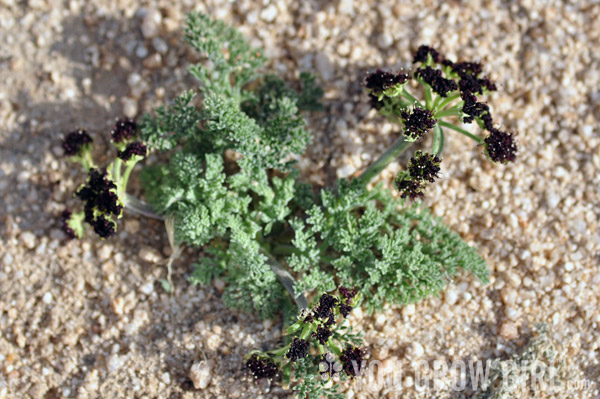
Desert Parsley (Lomatium mohavense) – Of those I saw, this one stands out as my favourite. It’s the colour, which morphed in the light from dark purple, to brown and even black. And yes, despite its diminutive size, it is in the carrot family.
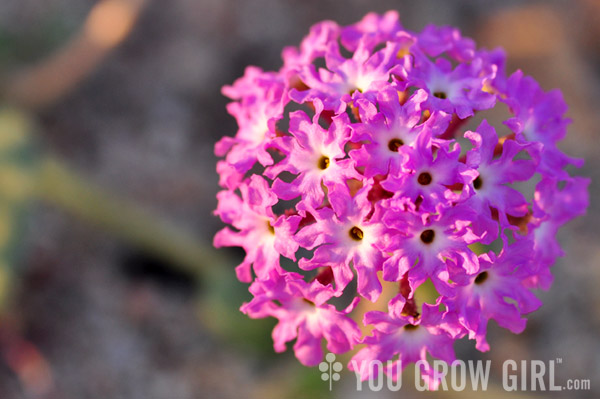
Desert-Sand Verbena (Abronia villosa) – [This and photo at top of page.] I noticed this pretty pom-pom flower in a few locations throughout the trip. Ironically, I spotted the healthiest patches growing in a vacant lot on a backstreet in the town of Joshua Tree. With little else growing, the plants had collected garbage and cigarette butts tossed out of car windows. This is one thing I observed in the desert both on this trip and the last. The landscape is sparse and often incredibly windy. Garbage blows around with nothing to catch or hide it so you really see the effects of litter in a way that we don’t here where there are trees and tall weeds to camouflage our neglect.

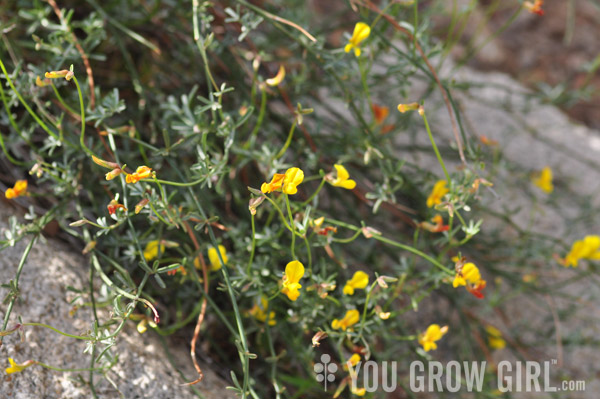
Desert Deerweed, Desert Rock Pea, or Desert Lotus (Lotus rigidus aka Acmispon rigidus)

Desert Forget-me-not (Cryptantha maritima) is in the Borage family, which is obvious due to its prickly, hairy stems and leaves.
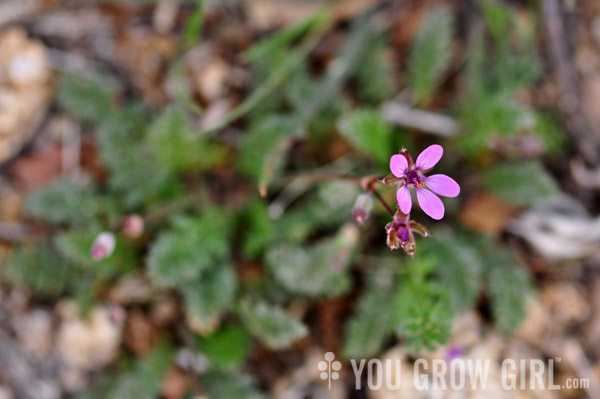
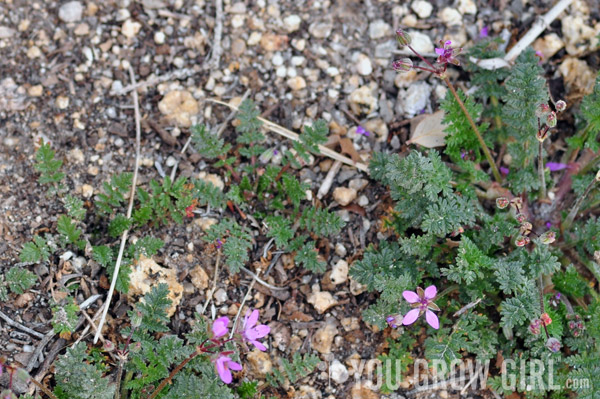
Redstem Filaree (Erodium cicutarium) is a cheerful member of the Geranium family that I was happy to see blooming (and in some cases setting seed) in several locations over the course of our trip, even though it is not native to the region.

Fremont’s Milkvetch (Astragalus lentiginosus var. fremontii)
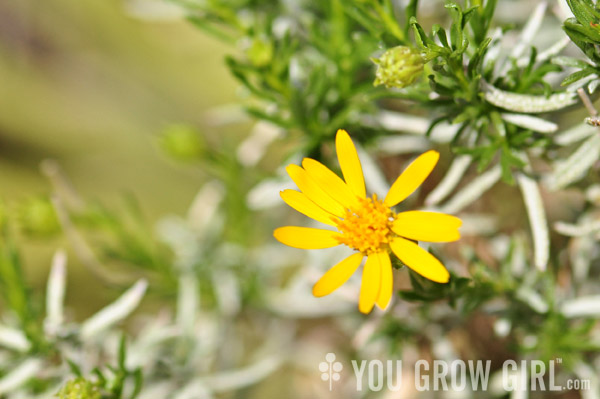
Goldenbush (Ericameria linearifolia)
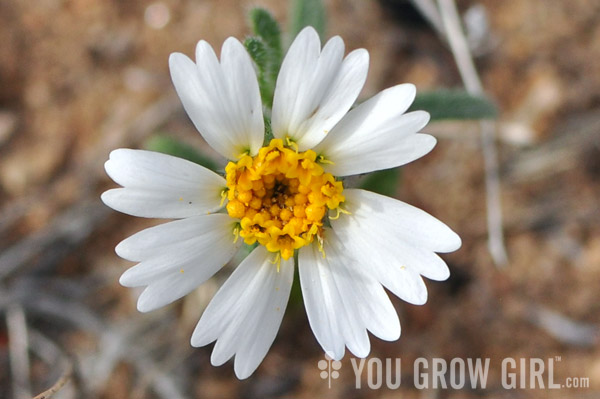
Desert Star (Monoptilon bellidiforme)
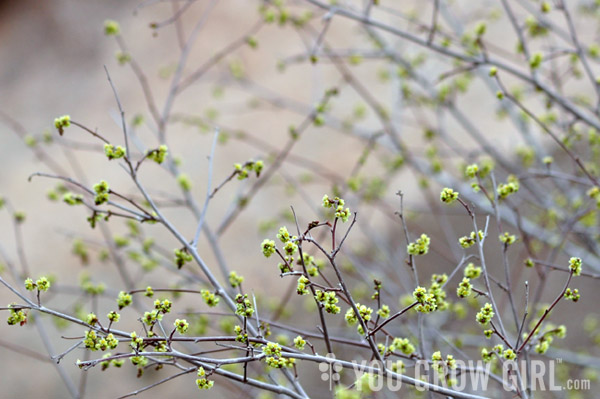

Skunkbush (Rhus trilobata) – This bush smelled divine, and as you can see, the bees loved it! I originally thought it was some sort of currant relative (the leaves were not yet out), but eventually identified it as a sumac. Apparently the berries are edible, but sour.
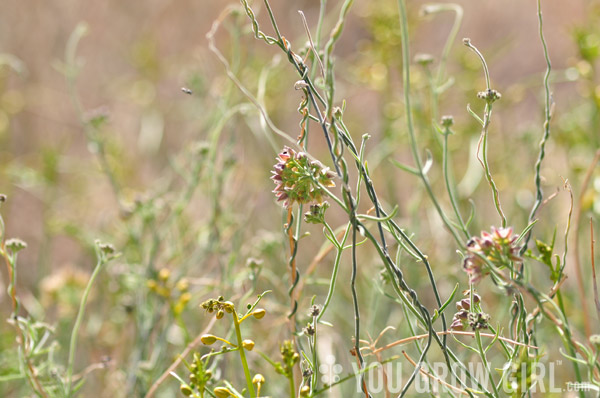
Trailing Townula aka Hairy Milkweed (Sarcostemma hirtellum aka Funastrum hirtellum) – I saw this plant in the Cholla Garden, wrapped around and climbing up the cacti for support. It’s difficult to see in this photo, but the star-like flowers easily reveal its relation to the milkweed that grows here in the northeast. I was delighted to notice on this trip that while many desert plants were completely foreign to me, I was often able to accurately identify their family or close relations by observing specific characteristics. It’s little moments like these when I realize how much I have learned over the last 20 years.
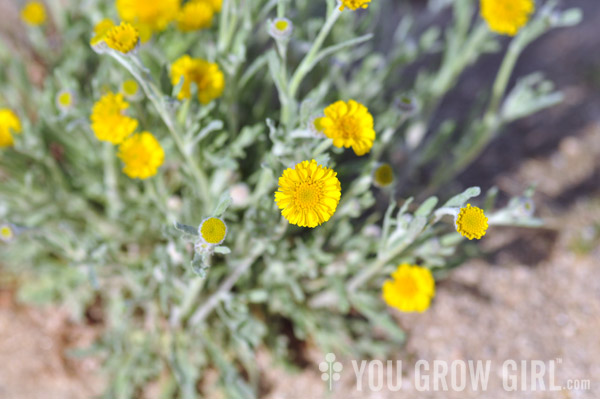
Woolly Marigold (Balleya pleniradiata)

Joshua Tree (Yucca brevifolia)
———–
Disclosure: Please note that there is an Amazon link on this page, which when clicked on and used to buy an item, earns me a small commission. These funds are put towards purchasing books as giveaway prizes and make a small contribution towards the costs incurred to keep this site afloat. Please see my current Publication Policy for more info.
They are all beautiful, and doubly appreciated for their ability to survive in such spartan conditions. That milkvetch color is my favorite, but the bee photo makes me feel like I am seeing an old friend. How I miss the buzz in the garden! Our snow cover is about halfway gone, and it won’t be long now.
The bees were wonderful! I have a post in the works about the blooming creosote bushes. They were loudly buzzing with bees. I spent every morning listening to them.
What great flowers. You timed your trip just right. I’ve never been to that area so I appreciate you sharing them. The black blooms on the desert parsley are my favorite.
isn’t that one amazing? I was blown away when I spotted it. I felt very fortunate to experience the desert during and after some rain.
Beautiful desert wildflower photos! I have family in NV and have had a few opportunities to photograph the desert in bloom. Always a wonderful experience. Thanks for sharing these.